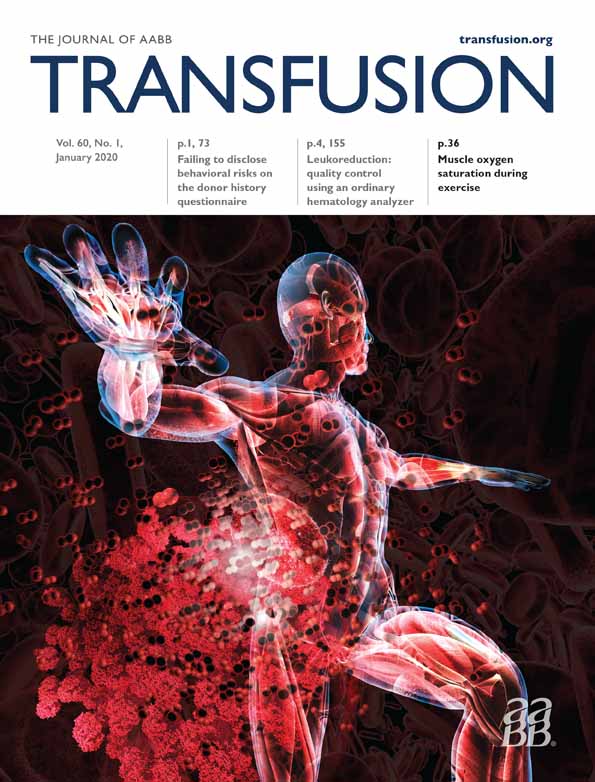A dual-center evaluation of platelet culture vials to detect the presence of microorganisms in platelets
Abstract
BACKGROUND
Microorganism contamination of platelets results in a high risk of transfusion-related sepsis. Here, the ability of culture vials (BD BACTEC Platelet Aerobic/F and Platelet Anaerobic/F vials, Becton, Dickinson and Company) to detect microorganisms in leukoreduced apheresis platelets (LRAPs) and leukoreduced whole blood platelet concentrates (LRWBPCs) was assessed.
METHODS
LRAPs or LRWBPCs were inoculated into Aerobic/F and Anaerobic/F vials and placed in a blood culturing system (BD BACTEC FX System, Becton, Dickinson and Company) for growth/monitoring over 7 days to detect preexisting contamination during false-positive testing. Subsequently, platelets were seeded with microorganisms at approximately 10 CFU/mL or approximately 1 CFU/mL to simulate contamination. Aerobic/F and Anaerobic/F vials were inoculated with platelets (sets of 12). Microorganism growth was detected in the BACTEC FX instrument over 7 days. Overall, 2925 vials were tested.
RESULTS
Of the 1905 vials included in the microorganism detection phase, 63 (3.3%) Aerobic/F and 16 (0.8%) Anaerobic/F vials were both BACTEC FX and subculture negative. From the remaining 1827 vials, two (0.1%) Anaerobic/F vials were false positive; no false positives were observed in Aerobic/F vials, and no false negatives occurred in either vial type. Of the remaining 1825 vials (99.9%), 955 Aerobic/F and 870 Anaerobic/F vials were true positives. The mean-time-to-detection range was 8.5 to 77 hours. All true-positive Aerobic/F and Anaerobic/F vials showed 100% agreement with subculture for positive identification of seeded microorganisms.
CONCLUSION
Aerobic/F and Anaerobic/F vials facilitate contamination detection in LRAPs and LRWBPCs down to approximately 1 CFU/mL. These results support the use of Aerobic/F and Anaerobic/F vials for quality control testing of platelets before transfusion.
CONFLICTS OF INTEREST
AT has disclosed no conflicts of interest. GD received research grants from Becton, Dickinson and Company, BD Life Sciences–Diagnostic Systems; JR, PW, TC, and SM are employees of Becton, Dickinson and Company, BD Life Sciences–Diagnostic Systems, the sponsor of the study.




